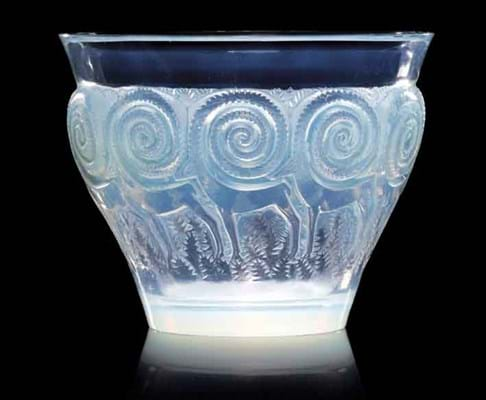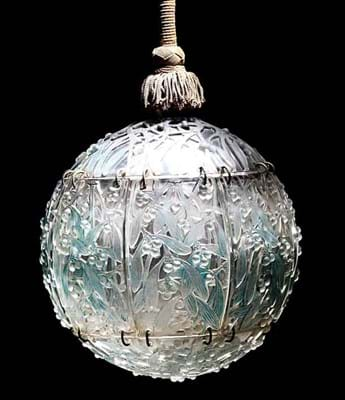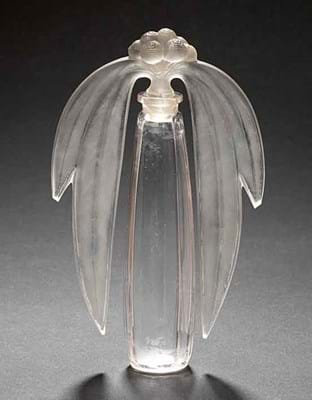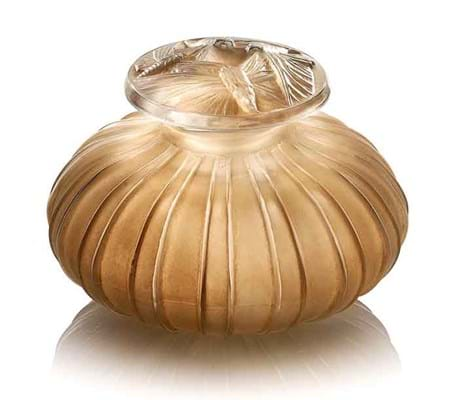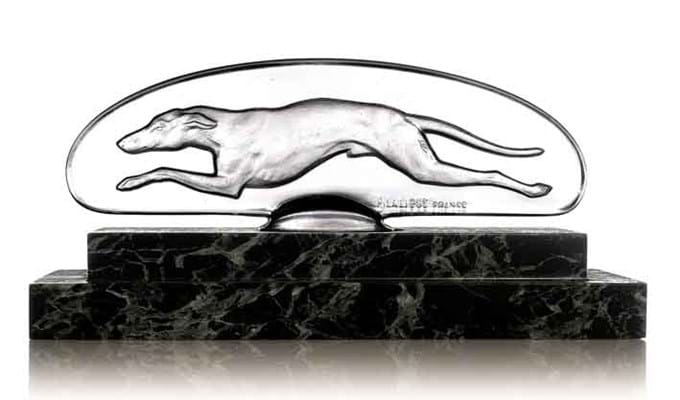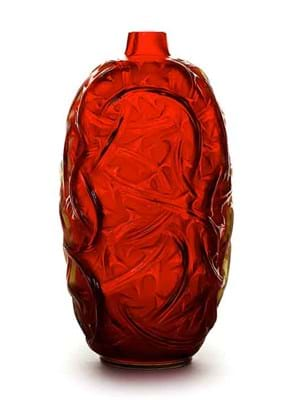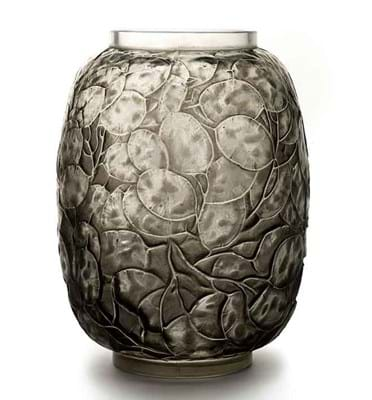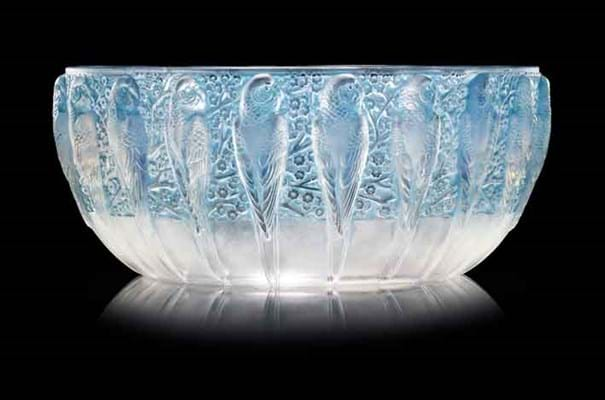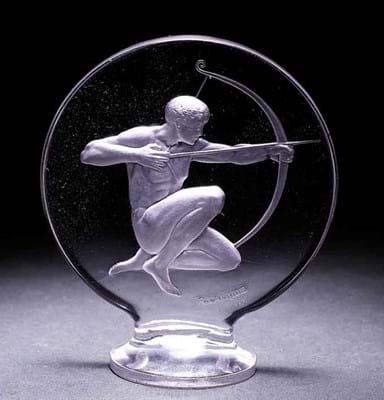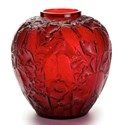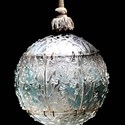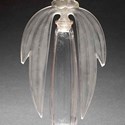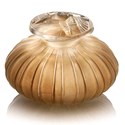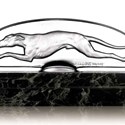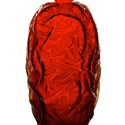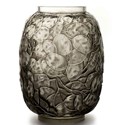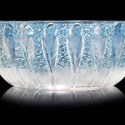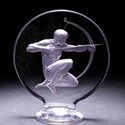At the turn of the 21st century, for example, when prices were at their peak, Clarice Cliff pottery merited its own regular specialist auctions. But now that demand has softened you'll find it incorporated with other collectors' ceramics or as part of a broader mix of decorative arts.
Lalique glass has been on a switchback. The buoyant single-status sales that were a regular feature at Bonhams and Christie's in the mid to late 1980s dropped off by the mid '90s as demand from the Japanese, who had driven the market for French art glass in general, fell away. In the UK at least, Lalique then joined Gallé, Daum et al in the glass sections of general Art Nouveau/ Deco sales.
But while many Art Nouveau glasswares remain on the back burner commercially, the value of Lalique's inter-War glass has benefited from the growing demand for Deco and Modernism and begun to rise again. Around 2005 Christie's relaunched their stand-alone Lalique auctions in South Kensington and they now hold two per year, the latest being on November 17.
This autumn they were joined by Bonhams back in the fray with a stand-alone sale on November 18, the first dedicated sale they have held for 20 years. As antiques guru Eric Knowles, who founded those first mid-1980s sales in their Knightsbridge rooms, reflects in the catalogue, "It's good to know that what goes around comes around."
Interest in Lalique is international but, while the Japanese are still there to a degree, these days it is buyers from France, the UK and the US that form the main collecting base. There is also, says Bonhams' Mark Oliver, emerging demand from Hong Kong and China and some from Russia.
Christie's Joy McCall notes that private buying dominated at her latest sale with most purchases made very much according to personal taste. That was reinforced by Mark Oliver, who said: "Those new faces to Lalique are very moneyed, looking to build collections at the high end and are not phased by competition."
Not that this automatically gives rise to unfettered, free spending. If personal whim is a trigger, not everything will appeal. Moreover, many buyers are price-sensitive, being well versed in Lalique values. As a mass-produced collectable, it is easy to track and compare prices. In short, if estimates are too bullish they hold off. All this was reflected in the results for the two sales held last month, which saw some very high prices and some substantial failures.
Sales statistics
Despite their common theme, the two sales were rather different in content. Christie's (25/20/12% buyer's premium) sale was small at 120 lots but, in contrast to a similar-sized £477,000 May sale, which contained more of the costly colour pieces, this time the affordable mid-range plain and opalescent pieces predominated, with only around half a dozen lots guided at £10,000 or above. Take-up was strong, with all bar 15 lots getting away to net just over £277,000.
Bonhams' (25/20/12% buyer's premium) sale was bigger at 202 lots and swelled by one large single-owner consignment. It contained many more pieces from the expensive end, with just under 30 lots guided at £10,000-plus and many duplicates in different finishes and colourways.
The selling rate here was much lower, just under 50 per cent and the failures were a mix of rarer creations with high guides (like their frosted and polished Firebird centrepiece guided at £36,000-40,000) and lower-value pieces produced in larger numbers.
But the higher proportion of big-ticket pieces offered at New Bond Street meant that, despite a lower take-up, they still netted £394,590 for the 98 lots that did get away.
Coloured vases
Topping the Lalique price list were coloured vases from Bonhams' sale. They were offering four versions of the 10in (25cm) high Perruches vase, a 1919 design of budgerigars amongst prunus in red, amber, blue and green.
The red vase led the list. In 2004 an identical version sold for £7000 in the same rooms and Bonhams hadn't offered another since. The £20,000-24,000 guide sounded pretty bullish by comparison and the final price of £34,000 even more so. It was contested by two determined collectors, one in the room and one on the phone.
The same bidders battled over the green version guided at £18,000-22,000, which came in at £30,000. The amber version guided at a lower £17,000-19,000 made £18,000 and the blue version £17,000 (estimate £18,000-20,000).
Selling at £21,000 and £20,000 respectively were two more of Bonhams' vases: a 9½in (24cm) high frosted and polished grey black Martin Pêcheurs vase designed in 1923 and a 9in (23.5cm) high 1921 design triple-cased green Poissons vase.
By contrast, the sale featured four Formose vases moulded with long-tailed goldfish in various colourways, variously guided from £1800-2200 up to £10,000- 15,000. None of them sold.
Lalique's light fittings also have a strong following. One of these, a 13in (34cm) diameter Madagascar frosted ceiling light (with rose), moulded with monkey heads in relief around the rim, provided Christie's with their highest price. It was pursued by three phones, selling to one of them, a private European buyer, for a treble-estimate £18,000.
Bonhams were offering an impressive 20in (50cm) diameter Boule de Gui chandelier designed in 1922, moulded, frosted and stained with mistletoe and with a period hanging rod. A piece that had spent decades in the vendor's garage in Leeds, it too made £18,000, selling to a Russian buyer.
Christie's Madagascar light was followed in price by a more traditionally popular Lalique trophy - an opalescentBacchantesvase. Originally designed in 1927, this example turned out to be a post-War model, as noted in a saleroom announcement. Notwithstanding, it still managed a mid-estimate £17,000. By contrast, Bonhams' opalescent and stained version of Bacchantes guided at £22,000- 25,000 failed to get away.
A third high-flyer at Christie's was more unexpected. A 4¾in (12cm) high opalescent and blue-stained Rennes vase moulded with a frieze of mountain goats is not a common piece and the estimate of £1200-1800 was cautious. But the final price of £15,000 was very high, paid by the same collector who secured the Madagascar light after a very prolonged duel with another phone bidder.
Car mascots and scent bottles are two other sought-after sub-species of the Lalique genus. Both Mark Oliver and Joy McCall singled out individual early scent bottles that they felt made particularly strong prices.
At Christie's a 2½in (6cm) high Côtes Bouchon Papillons bottle designed in 1911, moulded to the stopper with butterflies, frosted and sepia-stained - a particularly tactile piece that "had to be held," felt McCall - realised £4500. Bonhams' sale included a 4½in (12cm) high Bouchon Eucalyptus frosted and polished bottle designed in 1919, which had an extravagant winged stopper and commanded £10,000.
All of these prices paled in comparison to the sum paid at Sotheby's Paris (25/20/12% buyer's premium) a few days later for a one-off Lalique creation. A pair of glass doors created by Lalique for one of his English patrons, Lady Trent, set a new record for the designer when it sold for €1.75m.


